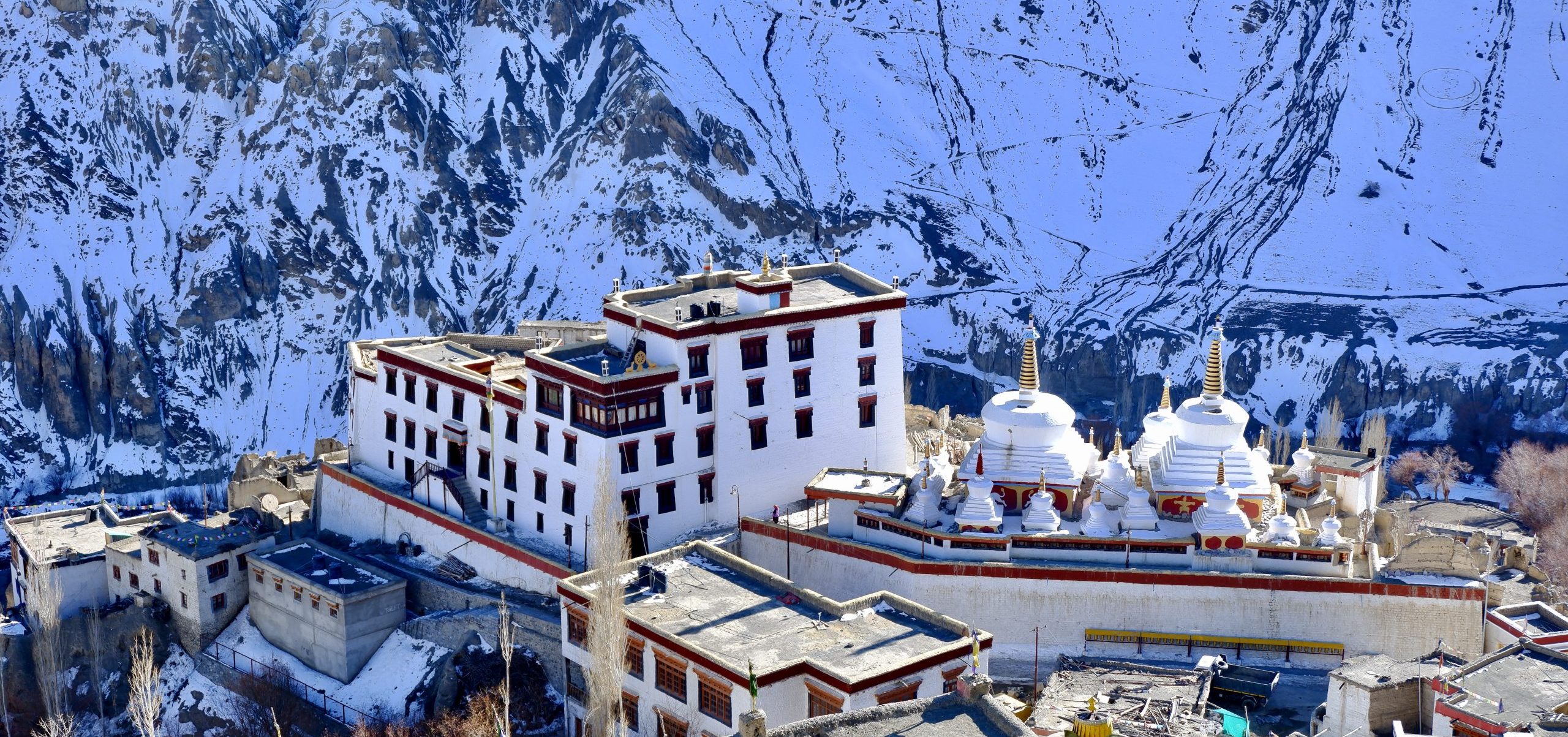LADAKH
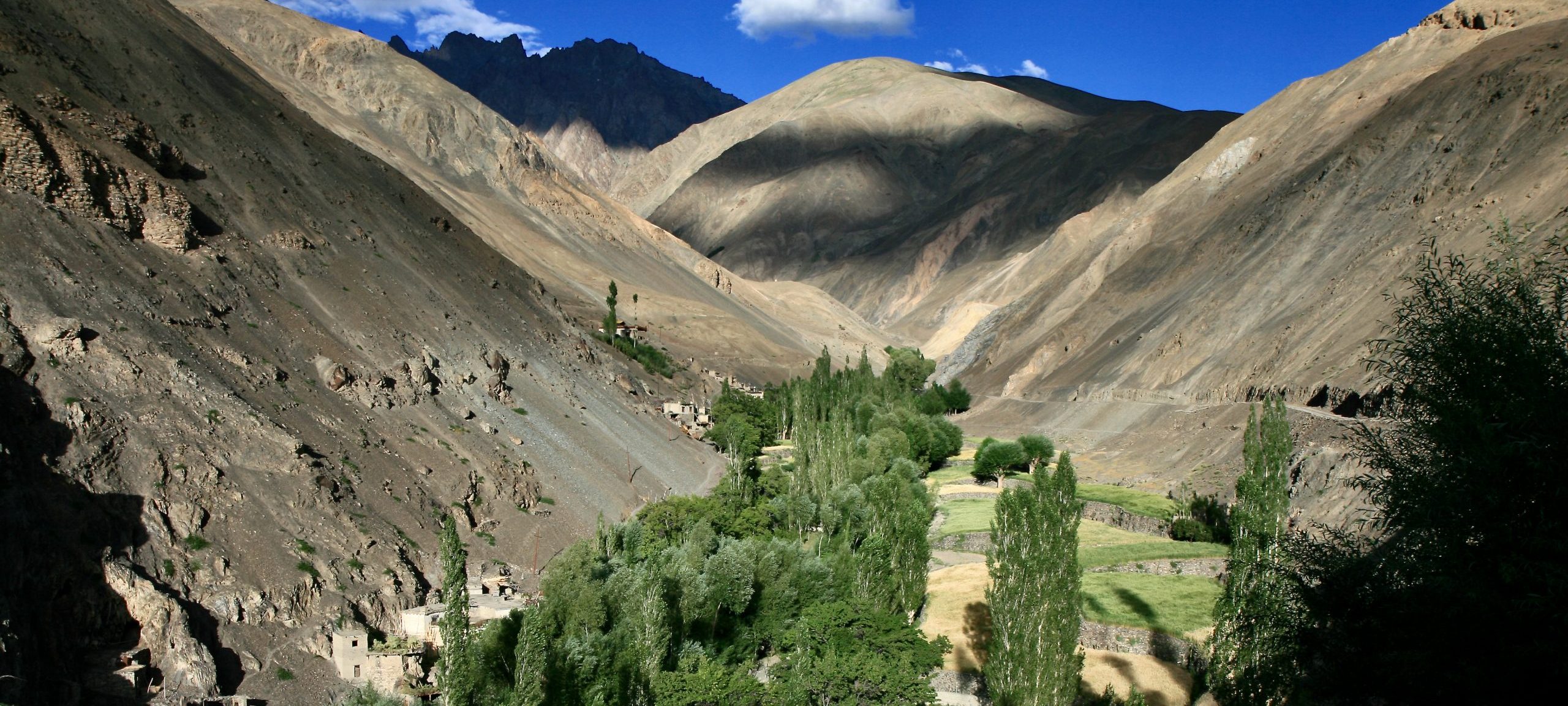
Ladakh is the first region I lost my heart to. I have been there every year since then, with a few exceptions. And it is also the region where I organised and led a trip for the first time: an all-female trip including trekking in 1997, making us the first on the market to get an all-female trekking crew together – there were even horseladys, which is absolutely not common. A lot has changed there since then – but it remains my personal favourite destination of all.
Although travelling to Ladakh is becoming increasingly popular, it is still not an easy country to visit. “If a valley can only be reached over a high pass, only good friends or bad enemies will come”. What was true about Ladakh for centuries is now long outdated – and not just because an aeroplane has long been able to cross the high pass from Delhi in 1 ¼ hours. Due to the remote altitude, the journey is still not easy – anyone getting off the plane first has to catch their breath at Leh’s 3,500 m high airfield, and the journey overland from Delhi via Manali still takes at least 3 days. However, the warmth and hospitality of the Ladakhis, the breathtaking rock formations, the spiritual atmosphere of the monasteries – all this easily compensates for the effort involved in travelling to the Indian Himalayas.
Here you will find information on various aspects and travel ideas that we can integrate into your trip. Countless combinations of accommodation, treks, sightseeing, encounters, activities, areas etc. can be put together – we will make you a proposal according to your key data, which we will modify together until it fits!
Getting around
But before you can start travelling, you first have to get there – and there are two ways to do this: by flight from Delhi or by road over several days. If you are visiting India for the first time, we recommend the flight – you should take your time for the road trip and really get to know the different regions. It is very diverse in terms of landscape and culture. However, this would leave less time for Ladakh. Convenient taxis or local buses are available locally. A lot has happened in terms of road construction in recent years/decades; the highway that runs through Ladakh from west to east is now quite well paved, and the other roads are in various stages of completion. There are fewer and fewer villages without road access. We usually provide a car with a nice, careful driver. But perhaps you would also like to take the local bus?
Ladakh is a very attractive place to ride a motorbike. The traffic density is comparatively low and the surrounding mountains are magnificent. The road conditions vary from very good to bumpy dust tracks. Of course, travelling from Delhi or Chandigarh to Ladakh, possibly even via Spiti and/or Zanskar, is particularly attractive. You can hire motorbikes there, which are then transported back while you take the plane yourself. Yangla Tours will be happy to organise an all-inclusive package with accommodation and, if desired, a support vehicle. You can also hire a motorbike in Leh for shorter trips. All you need is a driving licence. The rental fee does not include petrol, but does include a helmet. A Royal Enfield is of course the classic choice.
Zanskar is now also well connected to Ladakh and Himachal Pradesh by other roads, so you can easily extend your journey.
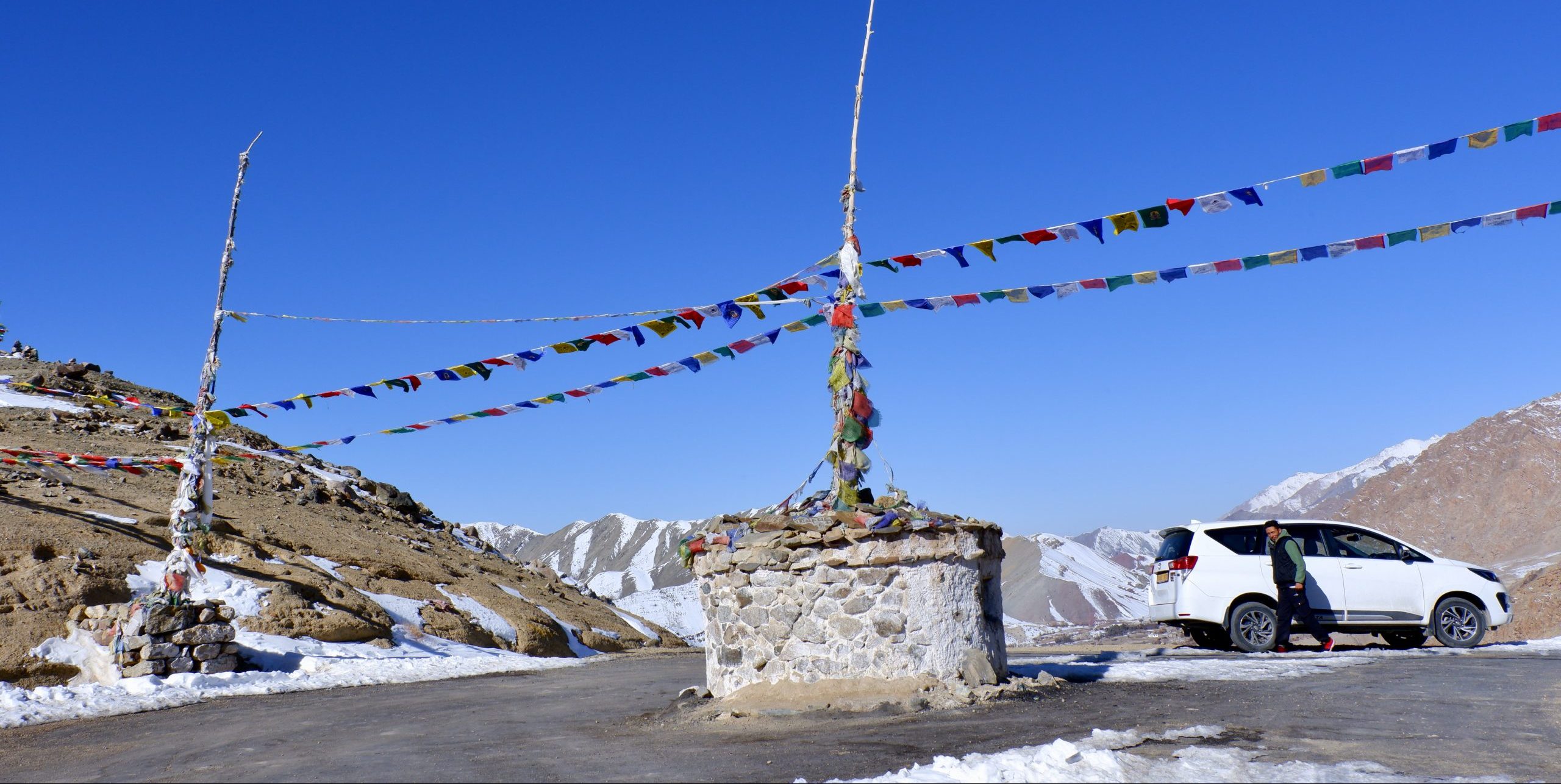
Accommodation
Almost all types of accommodation can now be found everywhere in Ladakh. Chic hotels can be found not only in the capital Leh but also in some villages. The crowning glory is the hotel in the converted part of the royal palace in Stok. There are pleasant camps with permanent beds in tents in beautiful natural locations, which are taken down in winter. They are very cosy in summer. Simple guesthouses are also available everywhere, but if they are, then they are mainly recommended in Leh. In the villages, homestays are the better choice – they offer more family life, delicious local food, traditional dry toilets and Ladakhi hospitality. Many homestays belong to the Snowleopard Conservancy, which introduced the successful concept in Ladakh. Part of the income goes into the community coffers and more is done for the conservation of the rare snow leopard (compensation when it kills animals, building fences, etc.). Some monasteries have an attached guesthouse – we highly recommend staying with the nuns at Thikse. And during a trek in magnificent scenery or when visiting nomads, you can sleep in a tent.
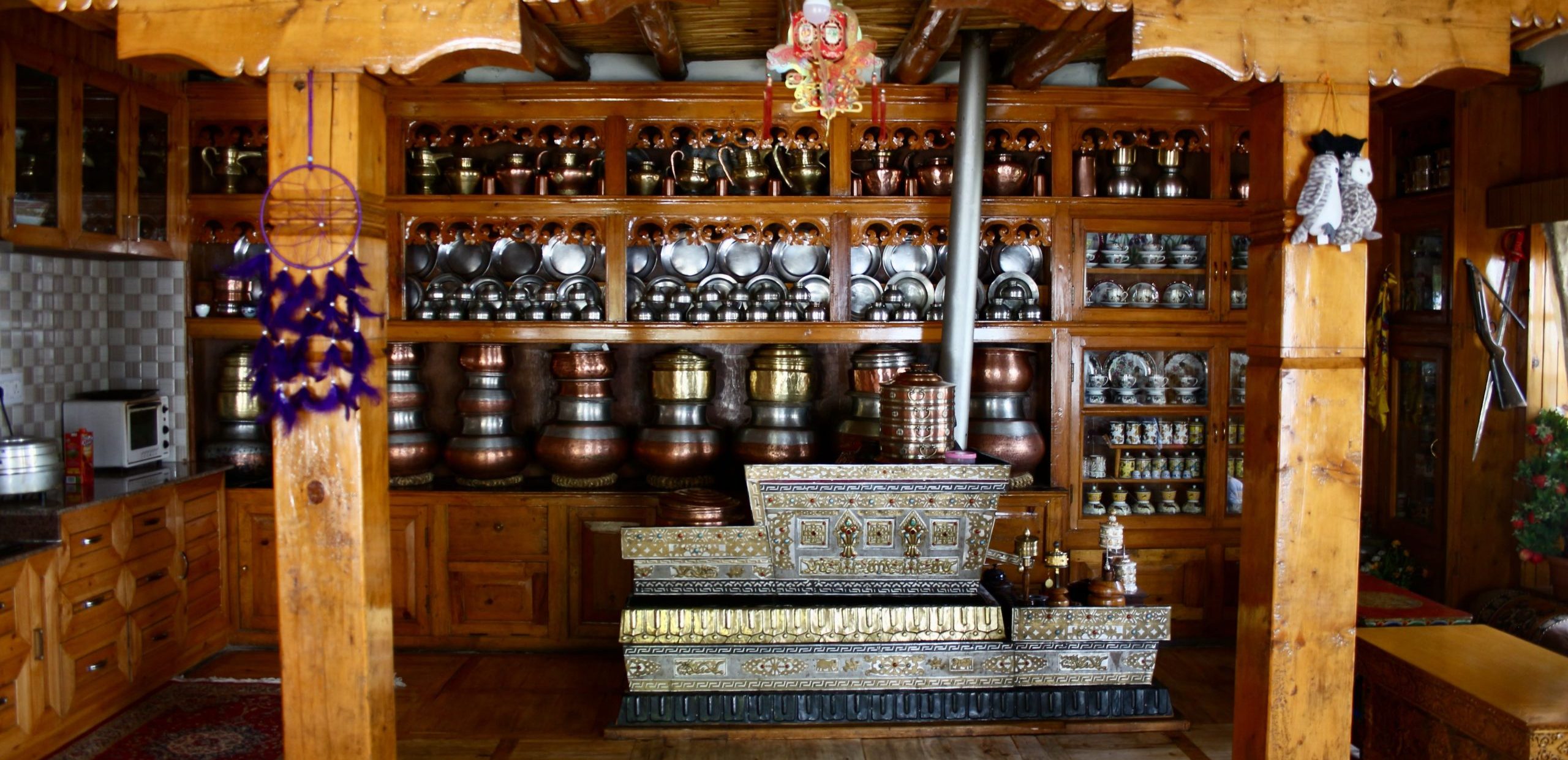
Trekking and Hiking
Trekking in Ladakh is a wonderful way to fully experience the landscape. You will be amazed at the variety of colours and shapes of dry rock and enter into a slower rhythm of life. At this altitude, slowing down is the order of the day. If you allow yourself to do so, you can manage almost any pass without too much panting. It is fascinating to experience what can be achieved with constant slowness and how this different speed has a beneficial effect on you.
Trekking in Ladakh is very different from trekking in the Alps or Nepal. The country is very sparsely populated and there are no lodges or huts. During the season, tea tents with a small range of facilities have set up on popular routes. In principle, however, you take everything (tents, food) with you. Porters are not usually hired to carry this (except in winter and possibly on homestay treks), but rather pack animals (small horses or donkeys). And so a small caravan always sets off. Our offer usually includes: Horses, accompanying team, vegetarian full board with breakfast, packed lunch, tea and 3-course evening meal, tents, thick sleeping mats, camping and national park fees as well as transfers to the trek and back to Leh.
It is possible to go on some treks without an accompanying team on the basis of Himalayan Homestays. The Sham Valley and the area opposite between Lamayuru and Chilling are particularly worthy of mention here.
The trekking routes are countless. There are treks with fixed start and end points, but on most of them you can start, leave, walk variations etc. at different points. Of course we offer everything! Our knowledge of the different sections is very broad. The description of the most common treks with fixed routes can easily be googled on the internet. Here we have described the trekking areas, the trekking possibilities there and some trekking routes.
The easiest way is to tell us what you are looking for in a trek (length, difficulty, passes, villages, area, solitude, frequency, other) and we will suggest something suitable for you. You can also choose between a longer trek or a combination of treks, e.g. first a homestay trek and then a higher tent trek.
> more Trekking- and Hikinginfos
Wer keine mehrtägigen Treks gehen möchte oder sich für einen größeren Trek zusätzlich zu Besichtigungen einlaufen möchte, denen empfehlen wir eine Fülle vonTageswanderungen in unterschiedlichen Gegenden, Höhen, Schwierigkeitsgraden und Längen. Bitte kontaktieren Sie uns für nähere Infos.
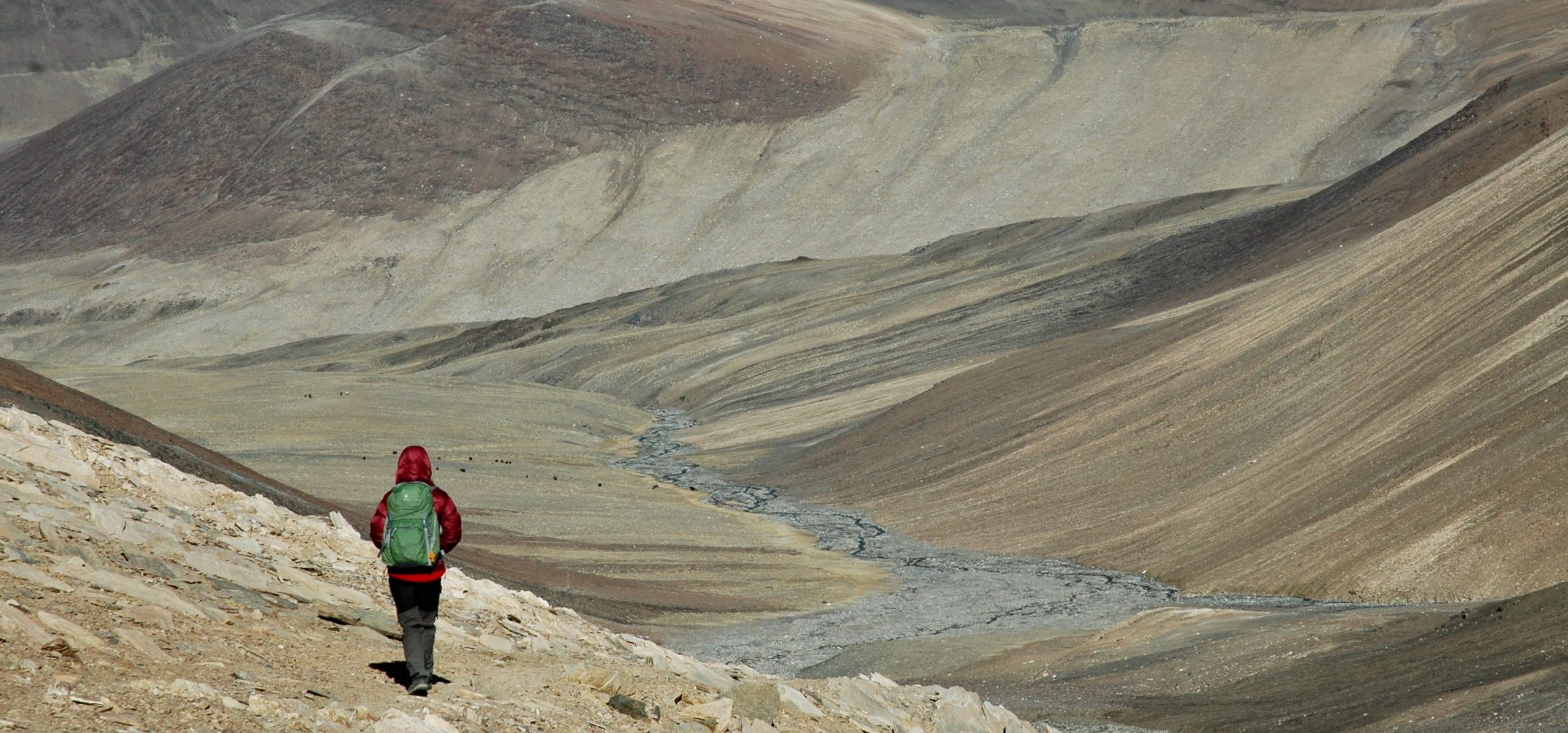
Rafting, Bicycle, Summits
In Ladakh, there are many other opportunities to be active in nature.
Rafting is one way to see Ladakh from a different perspective. Especially in the hot months of July and August, a trip on the water can be pleasantly refreshing. Rafting is possible on the Zanskar River and the Indus. An experienced captain guides the boat down the stretches, which range in difficulty from I to IV+. The participants paddle according to his instructions. The times and level of difficulty naturally depend on the water level. The more water there is in the river (i.e. the earlier in the year), the faster the boat and the more difficult the route. The most popular routes are Phey-Nimmu and Chilling-Nimmu. A multi-day rafting tour from Padum to Nimmu with camping on the banks is particularly special.
Ladakh is not a classic cycling country, but in the last few years/decade you can see more and more people pedalling. After all, you can cover longer distances in less time than on two feet, but you get to see more of nature than in a car. As the highway is now so well developed that cars are travelling very fast, we recommend taking side routes – unless you want to do the classic Manali-Leh. You can choose between various multi-day tours or add day bike tours from Leh to your itinerary. The hire bikes are proper mountain bikes that are easy to get around on the sometimes somewhat gravelled roads. You can download an overview of the cycling options here as PDF.
This region does not offer summit-expeditions to very high mountains, but there are a few peaks over 6,000 metres in Ladakh and the twin 7,000 metre peaks of Nun and Kun in Zanskar. In Ladakh you have to pay summit fees – peaks up to 6,200 metres are considered trekking mountains and are not that expensive, for peaks above that you have to dig deeper into your wallet. The classics in the Markha region are Stok Kangri (6,120 m), Kang Yazee (6,400 m), Matho West (6,230 m) and Dzo Jongo (6,280 m). In the Changthang, Chalung (6,500 m), Chamser Kangri (6,600 m), Lungser Kangri (6,650 m), Yalung Nong (6,080 m) and Mentok Peaks I (6,250 m) and II (6,210 m) beckon. The twin 7,000 metre peaks Nun (7,135 m) and Kun (7,090 m) are located in Zanskar.
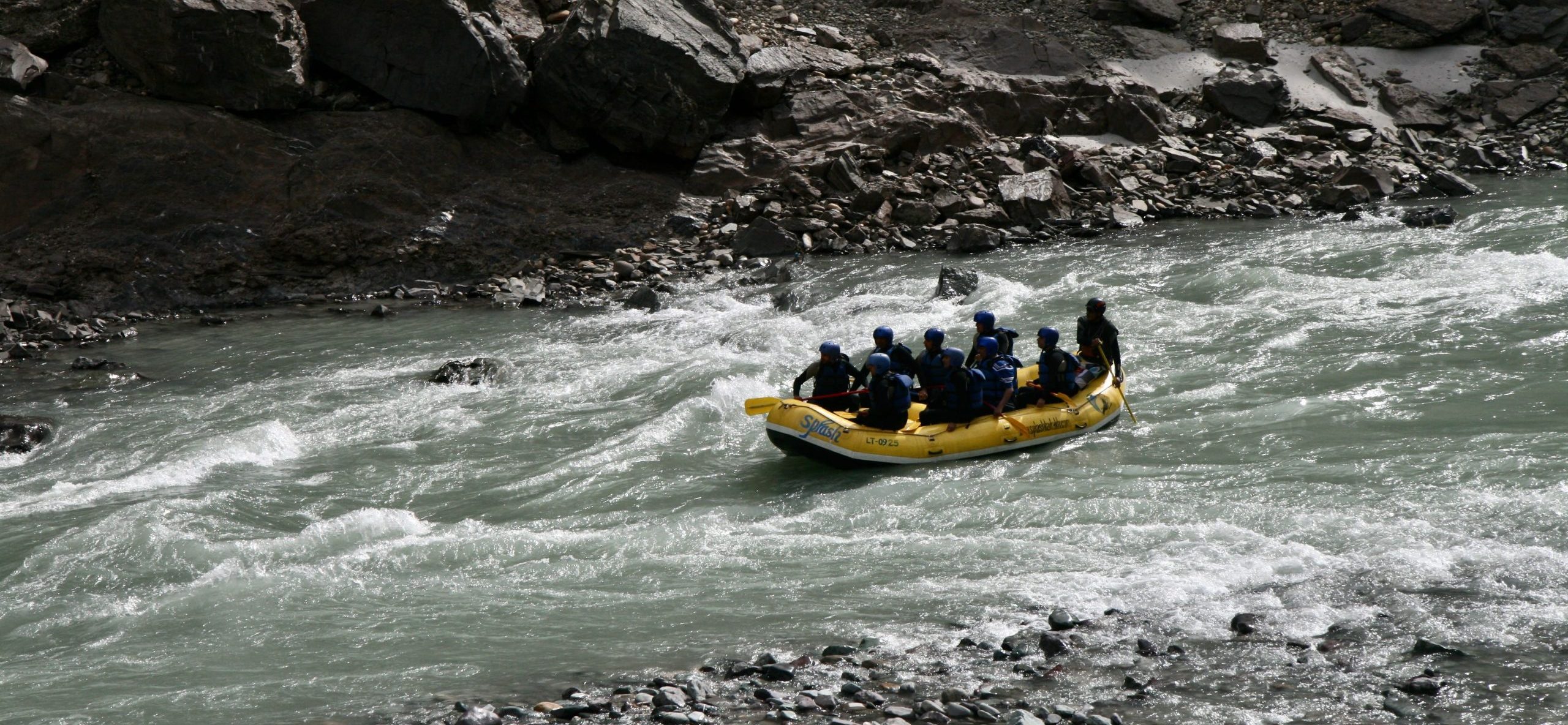
Buddhism
The Ladakhis are predominantly Tibetan Buddhists (with various Muslims in Leh and other places). The Dalai Lama is their spiritual and religious leader. Every village in Ladakh belongs to a monastery. There are over 400 monasteries in Ladakh (some are very small branches of the 13 main monasteries), almost all of which are inhabited by monks. The number of monks is over 3000 and the number of nuns is around 500. The monasteries belong to various Buddhist sects, with the Yellow Hat sect (Gelugpa order) being the most widespread. Some monasteries are located on the trekking routes, some can be reached by taxi by road and others are more difficult or hardly accessible.
Visits to all the usual monasteries can be arranged. It is also possible to combine tours with various monastery visits in one day. With a monastery guide (who can also translate your questions to the monks and nuns) you will learn a lot more than what you can read in books. We can also arrange a visit to a puja (communal prayer) if you don’t want to leave it to chance. Whether you have the pleasure of watching a sand mandala being made, however, is a matter of chance. The monasteries do not have special times for this and do not publicise it in advance.
Various monasteries organise monastery festivals with mask dances. In summer, these are mainly attended by travellers, whereas in winter you are a small minority among the locals. We always check whether a monastery festival is taking place during your planned travel period or you can also look for yourself, namely here.
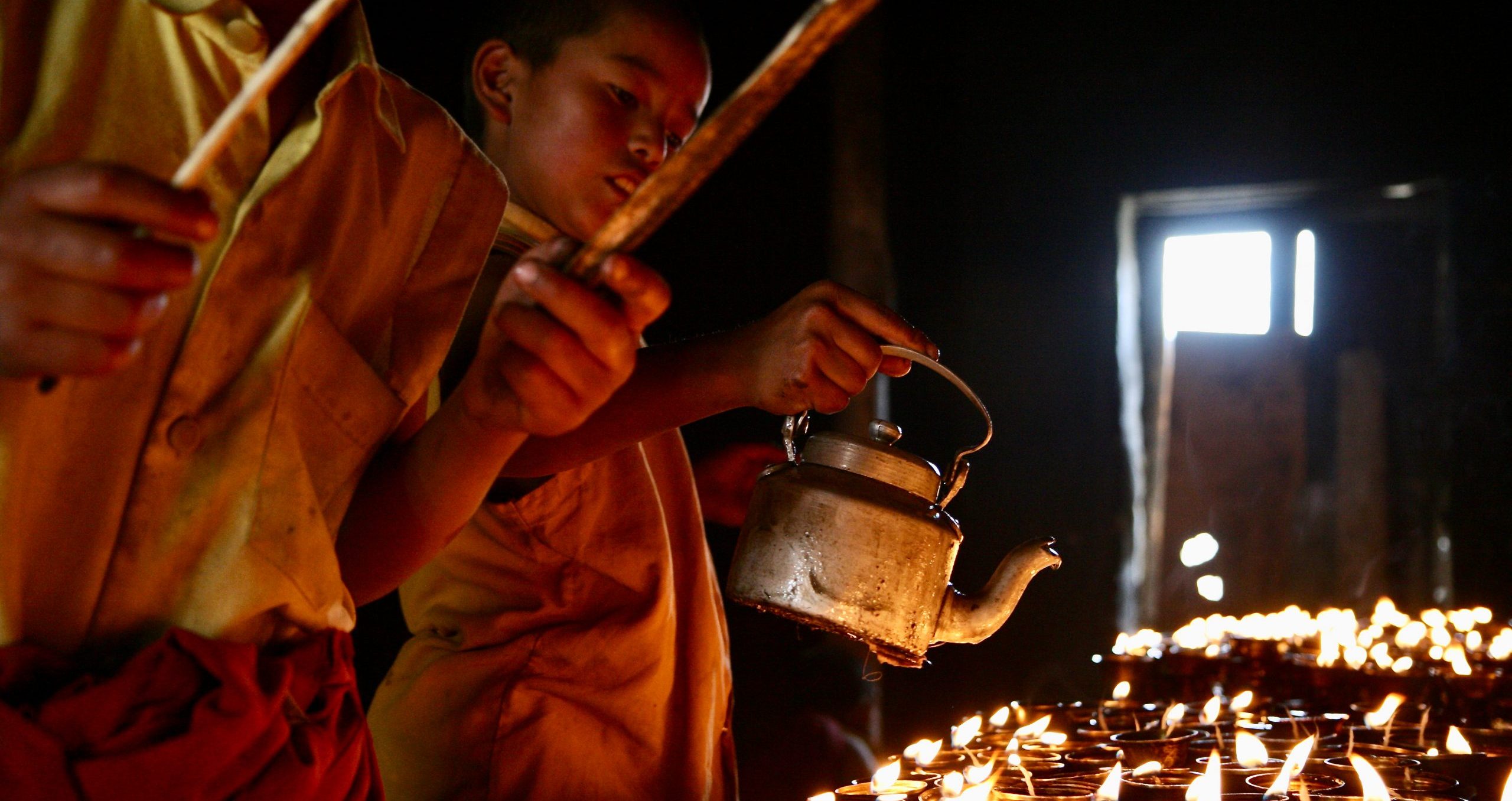
Oracle, Amchi and Petroglyphs
Several female oracles live in Leh and the surrounding area, which travellers can also visit. They are women who put themselves into a kind of trance state, whereby a deity takes possession of them. In this state, the oracle is able to give answers to decision-making problems and heal illnesses. In practice, this means that a number of people come together in a small room and communicate with the oracle one after the other. Each person can ask a question or have an illness cured.
This is usually a contradictory affair for our western minds and I have seen some people in great confusion afterwards. If the visitor wants to ask a question, he/she must be prepared for the fact that the answer may not be what he/she would like it to be. Therefore, especially when asking meaningful questions, make sure that you can deal with any answer afterwards. Even if someone does not believe in oracles, the encounter is very impressive and often makes this belief waver.
If a person wants to avoid this danger, he/she can also have an illness cured. However, no miracles should be expected; some people have felt no effect at all. Others, however, report a clear improvement in an ailment. I have not yet heard of any negative effects. Healing is achieved by the oracle sucking on one or two parts of the body either with its mouth or with the help of a tube and then spitting out strange grey lumps and mucus. For other illnesses, the oracle strokes its tongue with a kind of sword held over fire and blows on the diseased areas.
The deity from an oracle speaks no English, sometimes not even Ladakhi. Therefore, this arrangement naturally involves someone to interpret.
An Amchi is a doctor who diagnoses and treats according to traditional Tibetan medicine. The diagnosis is made by feeling the pulse and questioning, the “medicine” is herbal pills that taste terrible but have surprisingly positive effects. For sceptics: no one has ever felt worse after taking herbal pills. The diagnosis is often astonishing, as body conditions are discovered “only” on the basis of the pulse, which the doctor could not have known about. Some amchi are also experienced in acupuncture. A visit is recommended for a general health check, even if there is no acute illness at hand. There are very good English-speaking Tibetan amchis in Leh, but there is also one working in almost every village.
Petroglyphs are rock carvings from prehistoric times. There are more of them in Ladakh than you might think. Previously only concentrated in a “Rock Art Area” in Dhomkar in the Dah Hanu region and easily accessible via a footpath, most of the stones are either lying around individually or in large groups in unmarked places, so that you can and must discover them yourself. In addition to keen eyes, these discovery tours also require good footwear and surefootedness, as you have to climb around a bit. But it is precisely this form of personal discovery that makes the inclusion of petroglyphs in the tour programme so appealing. The knowledge behind this and the recording of the sites are still in their infancy.
Some petroglyphs are estimated to be 3 – 5,000 years old. These mainly contain depictions of animals and figures. There are also many petroglyphs of more recent date, i.e. less than 2,500 years old, with stupas and other Buddhist symbols. Often you can also find rocks with a mix of these two types. Apart from the site in Dhomkar, places with some petroglyphs of older date are quite easily accessible in Alchi, Sabu and in the Nubra Valley (near Panamik).
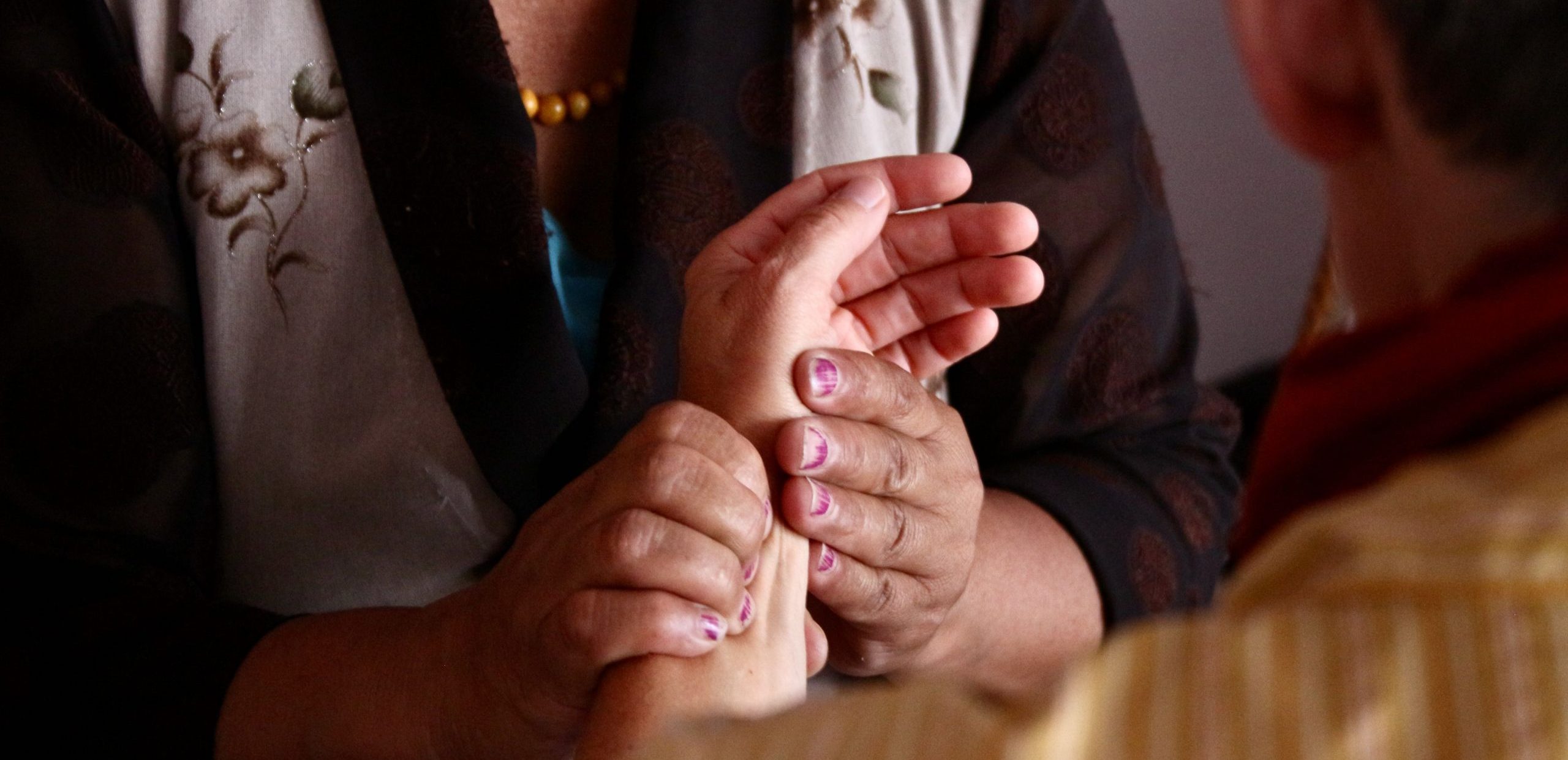
Nomads
In the east of Ladakh lies the Changthang, a plateau with an average minimum altitude of 4,500 metres, most of which extends into Tibet. Hardly any agriculture is possible here. It is home to Ladakhi and refugee Tibetan nomads, who move from place to place several times a year in groups of up to 30 families.
They take their herds of goats and sheep into the mountains every day, while yaks graze without supervision. Delicious yoghurt, butter and dried cheese are made from the milk produced every day. The Kashmir goat provides fine pashmina wool – the “gold of Ladakh”.
Due to its proximity to Tibet, a large part of the area is closed to Western tourists, while the accessible part requires an easy-to-obtain permit. Stays directly with the nomads are still in their infancy in terms of tourism. We offer you the opportunity to pitch your tent next to a nomad’s tent and follow their activities and chat with the help of an interpreting guide. You can, of course, taste the products and share meals with the nomads – or bring your own cook (which we recommend, at least for first-timers in the region).
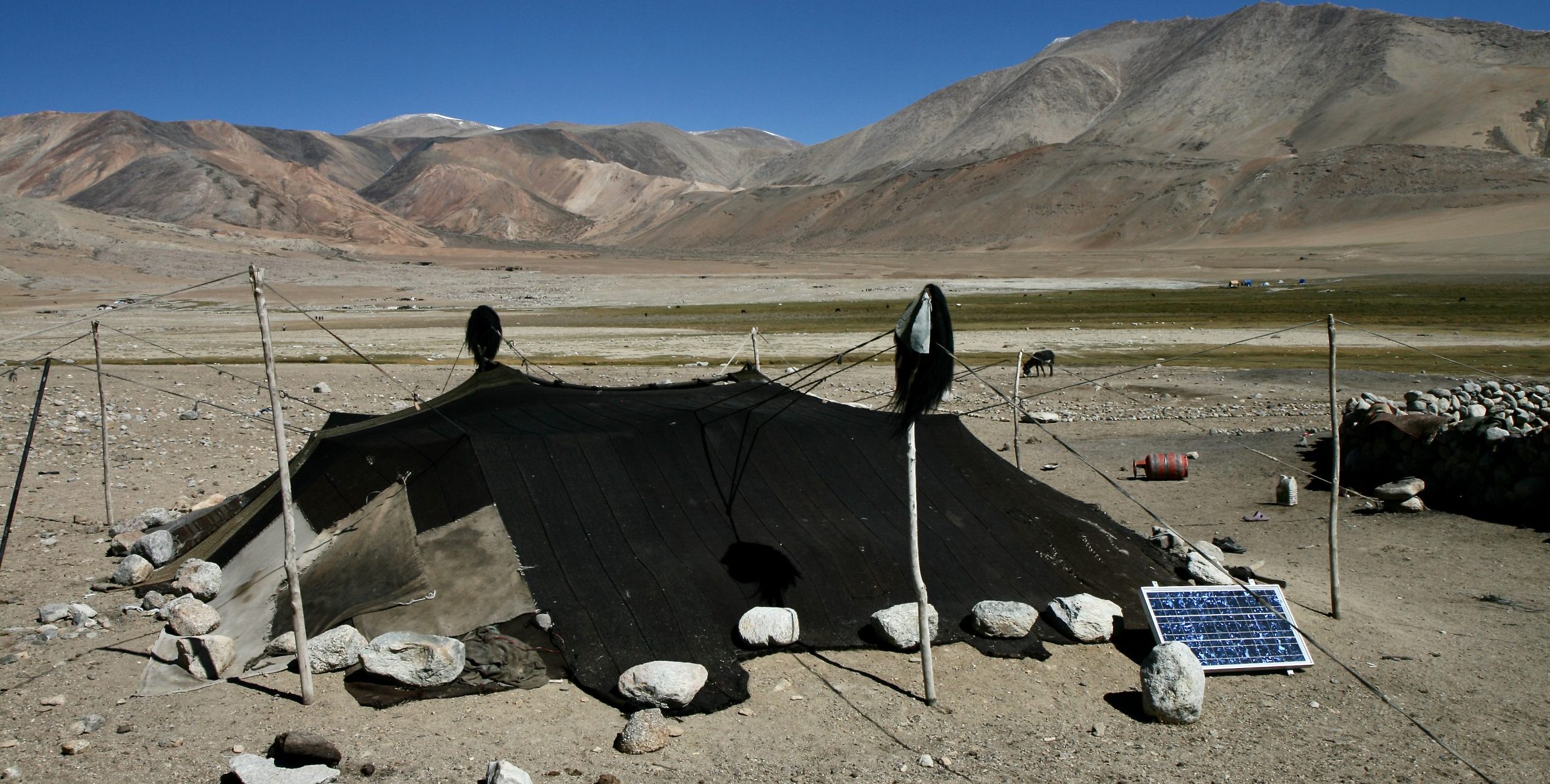
Ladakh in Winter
Ladakh in winter is a special experience: there are very few travellers who expose themselves to the sometimes very cold temperatures. At night, the thermometer can drop to a chilly -30°C, while during the day temperatures are often around 0°C when the sun is shining. However, the dry air means that the cold does not feel as frosty as in Europe. As the amount of precipitation is very low all year round, there is no need to fight against large masses of snow, the land is usually covered in a layer of icing sugar.
The Ladakhis spend a lot of time around the stove in the kitchen, telling stories and doing knitting or repair work. As well as spending more time together as a family, winter is also used for other socialising. Most weddings and monastery festivals take place during this time. In addition, the Ladakhi New Year Losar is celebrated for several days towards the end of December.
Visitors get an insight into Ladakhi life here, which unfolds undisturbed by the large influx of tourists in summer. This time of year is also an advantage for those interested in monastery festivals. There is even the opportunity to go trekking. Adventurous travellers can either embark on the winter Zanskar trek (Chadar trek), the Likir-Ang trek or the Spituk Chilling trek, whereby tents are dispensed with in winter in favour of overnight stays with local families. A day trip to Pangong Lake, where it can easily reach -20°C, is an experience. The Nubra Valley can also be easily travelled in winter, where there is also pleasant accommodation. The military keeps the road over Kardung-la clear.
A huge attraction in the wintertime is wildlife-spotting, especially the snowleopard. The chances are quite well as Ladakh is protecting the animals and the knowledge about the spotting has increased a lot over the years. You can stay in homestays and daily go out for spotting or even go to specials areas with tent and all equipment incl. heaters and thick mattrass.
Guesthouses offer their large rooms for overnight stays, which are heated by the sun during the day, in some accommodations the rooms are heated with a gas stove and there are now hotels with central heating.
